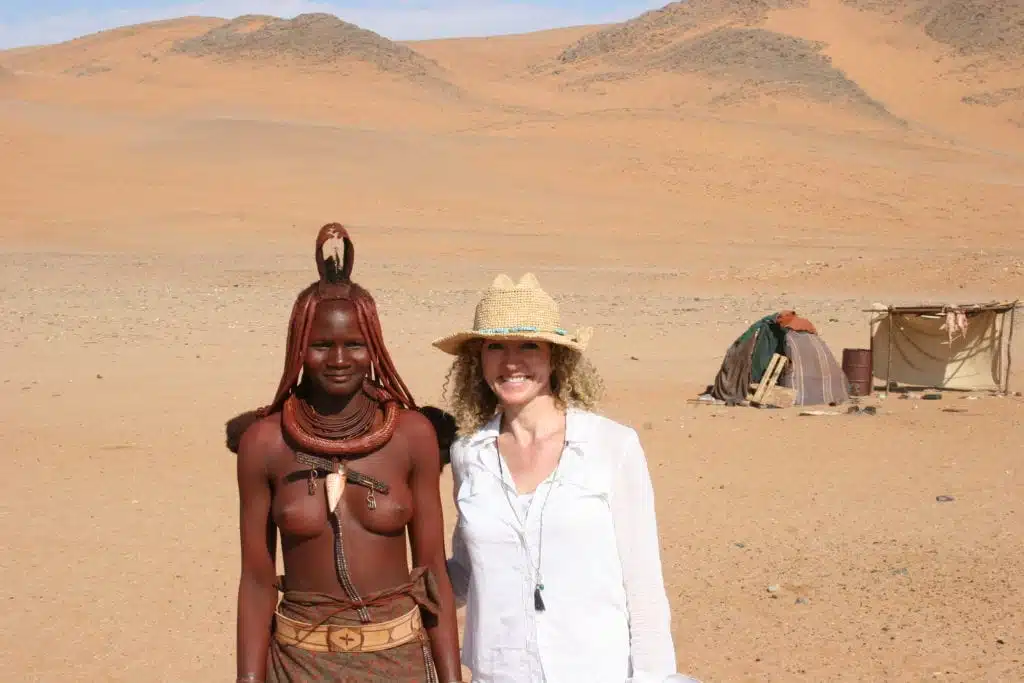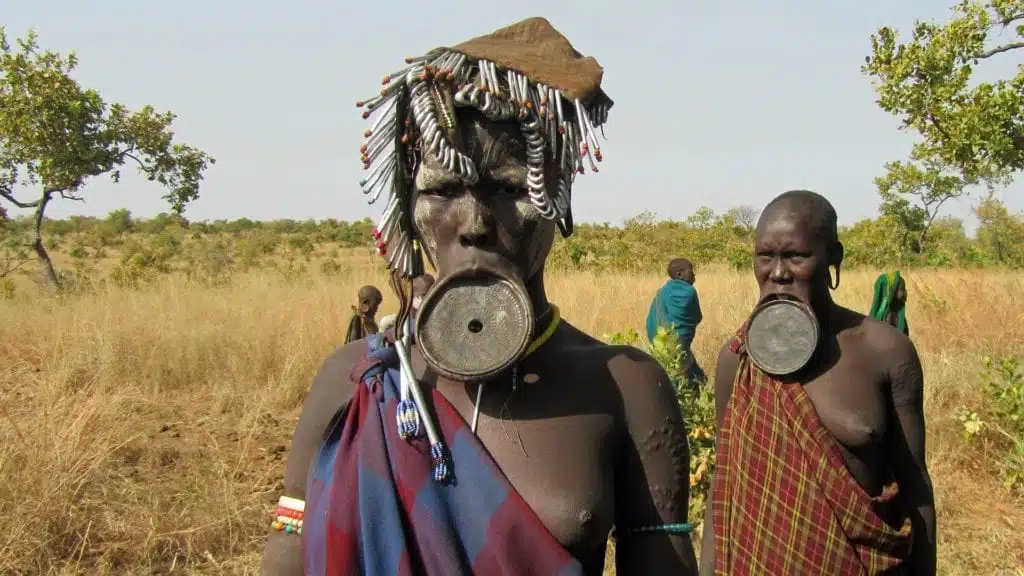CULTURAL WONDERS
The Remarkable Traditions of Africa
There are many wonders of Africa that inspire awe in visitors from around the world.
From the lofty heights of Kilimanjaro to the depths of the Great Rift Valley some 1,300 feet below sea level, the landscapes have captivated travelers, writers and explorers alike for centuries. The animals too, many indigenous exclusively to the continent, are stunning to behold in their natural habitats, even if we are thoroughly familiar with them through television and the internet.
As the cradle of life, Africa is home to many of the world’s oldest civilizations, and the traditions that have been founded and sustained across the millennia are no less remarkable than the land and life from which they blossomed.
I have been so fortunate to have witnessed some of these remarkable ceremonies in person, but with over 3,000 tribes residing in Africa, each with numerous idiosyncratic traditions of their own, there are many I have yet to see and many more I may never.
I invite you to read on as I share some of the most iconic traditions and ceremonies of this unique continent and encourage you to experience them if ever you may have the opportunity.
1. The Himba of Namibia
Namibia is one of Africa’s most alluring and otherworldly regions. Deep ochre sand dunes rise from the desert floor, ghostly naked trees grasp to life, sentinels of the barren landscape, and the beautiful Himba appear on the horizon, shimmering in the sun and resilient to this inhospitable place.
The Himba are a naturally beautiful people, their strikingly attractive features enhanced by otjize, an exotic dark terracotta paste applied to the skin from a young age. Originally suspected to be the semi-nomadic people’s means of protection against the sun and insects, it is now known to be a mark of simple vanity, akin to our own makeup and lipstick. Only the women apply otjize, blended from ochre, butter and animal fat, and do so from a young age to both skin and hair.

Also interesting to note is that the Himba choose a birth date, rather than recognizing the one dictated by physical birth.
When deciding to have a child, a Himba mother will sit alone beneath a tree and listen for the ‘song of the child’. She will then teach this to her husband and they will sing in unison when they are conceiving the child.
The midwives and fellow womenfolk are taught the song, which they echo as they tend to the infant, and finally the child itself learns his or her song when old enough to understand.
2. The San Healing Dance
Thought by many to be the world’s oldest civilization, the San people of South Africa and Botswana’s Makgadikgadi Pans have a millennia-old tradition that, interestingly, is now being mimicked in western alternative culture.
Breathwork has become a profoundly effective therapy for addressing psychological trauma and mental health issues, but it is something that the San have been accessing for generations.

The all-night dance ceremony led by the tribe’s healers and elders incorporates chanting and deep breathing to induce a trance-like state through hyperventilation.
This is said to allow the tribespeople to connect with ancestral spirits, but also helps to heal the sick. Interestingly, one of the primary conditions it is said to heal is ‘star sickness’ – a mental condition causing ill-will, anger and jealousy, curiously similar to the reasons we westerners are now exploring breathwork therapy.
3. The Leaping Maasai
The Maasai are a tribe steeped in culture, most noticeably their bright garments. The shuka, the red cloth traditionally worn by all tribe members, is said to ward off wild animals, red being the sacred color of the Maasai.
Color plays a large role in traditions, with orange being the color of hospitality, yellow representing fertility and growth, blue the sky from which the rain and life descend, and green nourishment.
Though their iconic dress is highly distinctive, it is perhaps their leaping dance that is most striking and curious. A rite of passage, the older boys of the tribe perform the adamu initiation dance in pairs to become men and display their prowess and fitness. The higher the jumper, the more desirable he becomes to his future bride.

The Maasai also have some less pleasant traditions. Spitting is seen as a sign of passing your energy, a piece of your soul, to the receiver. Guests are welcomed with a damp handshake, young children are blessed in a shower of spit and departures are given safe passage with a splash to the forehead.
4. The Nyau Brotherhood
The Chewa people of Zambia, Zimbabwe, Mozambique and Malawi are a matrilineal culture, wealth and inheritance passing from parents to daughters. But despite this feminine distinction in material possession, it is the fearful Nyau Brotherhood that commands authority.
The highly secretive Nyau are said to be possessed by the spirit of their masks, descendents and animals induced in a private ritual, usually in an abandoned cemetery where most would fear to tread.
The Nyau are spiritual guardians of the Chewa, performing blessings, ceremonies and dances for the wellbeing of the tribe, but they are also the omnipotent authoritarians. Their masks hide their identities, a series of hidden codes and signals are shared only by the initiated and the Chewa remain unaware of who may lay beneath the mask, even if it is their brother or husband.
Wielding unlimited authority, the Nyau can be paid to brutilize or even murder a fellow tribes-member and are as answerable to no one. As one local policeman said of them, “how can you put an elephant or a snake in jail? As it is with Nyau.”
Despite the alarming power held by this unofficial militia, they are also the upholders of peace and justice, the society’s equilibrium maintained by the masked brotherhood.
-
Zu/’hoasi Bushmen of Botswana
With many regions of Africa arid and dry through several months of the year, symbiosis and ecological wisdom are not only necessary for many tribes, but also absolutely imperative for their survival.
Few embody this more so than the Zu/’hoasi Bushmen of Botswana. I say ‘bushmen’, but the entire community is equally as proficient in their remarkable bushcrafts.
Wandering the barren landscapes of the Makgadikgadi one will likely wonder how these people have endured for so long, but at once, the tribe will halt, crouch, dig in the dirt and reveal a gourd that provides water.
These hunter-gatherers far surpass any survival expert of western culture, but are also profoundly ecologically aware, only taking what they need, using every part of their harvest, be it plant or animal, and always returning what they can’t use to the ground as fertilizer for more vegetation or feed for the region’s fauna in a symbiotic cycle of sustainability.
7. Wodaabe Weddings
The Wodaabe reside in Niger, yet their courtship dance rivals that of any Melanesian bird of paradise. Every year, at the end of the rainy season, eligible bachelors gather for the gerewol, a somewhat disconcerting beauty pageant to those unfamiliar with the ceremony.

The young men dress in vibrant colors and adorn their faces with highly contrasted makeup. Lining up in front of an adoring gathering of their would-be wives, the men grin inanely, bearing their teeth and widening their eyes in what can seem like a somewhat psychotic display.
Yet the wider the eyes and the broader the grin, the more attractive the suitor, the whiteness of both teeth and eyes – exaggerated by their stark makeup – deemed a sign of good health and allure. From this lineup of Wodaabe Cheshire cats, the young brides choose their husbands and consummate their decision.
-
Mursi Mandibles
Few adornments are more iconic than the enlarged lip plates of the Mursi. The women of the Ethiopian tribe begin the process in their mid-teens – entirely voluntarily, it should be noted. Starting with a small wooden peg, the women enlarge the holes over many years, some even removing teeth to accommodate their ever-expanding ceramic lip adornments. Status, prowess and, some believe, wealth are thought to be the leading message conveyed by these often elaborately-painted discs.

The Mursi are one of the few remaining tribes to maintain this practice, dating back some 30,000 years. While it may be rather disconcerting and unappealing in our culture, the lip plates are considered to be a mark of beauty to the Mursi, men often refusing to sleep with or wed their bride until her piercing has healed and the enlarging process has begun.
The plates, known natively as dhebi a tugion, are a source of great pride and devotion to the Mursi husbands, and the disc is removed when he dies as a sign of mourning.
This disparity of traditions is only a glimpse of the fascinating cultures of Africa. Grooms engorged to obesity on cow’s milk and blood, youths banished into the wilderness for months on end to find their manhood, Tuareg nomads stained blue by their traditional tangelmust headdresses – there are so many fascinating cultures and ceremonies to be explored.
Though modernization within tribes is threatening many of these traditions, tourism, somewhat ironically, is also helping to keep them alive, and many tribes maintain their ancient ways as a source of both income and pride for visitors.
At Rothschild Safaris we are acutely aware of the potential for exploitation and continually assess our providers to ensure that these cultural interactions are for the sustainability and preservation of both culture and community.
If I have intrigued or inspired, please discuss your interest in African cultures with your Travel Designer to see how and where you may be able to witness – and even partake in – some of these remarkable cultural activities.

